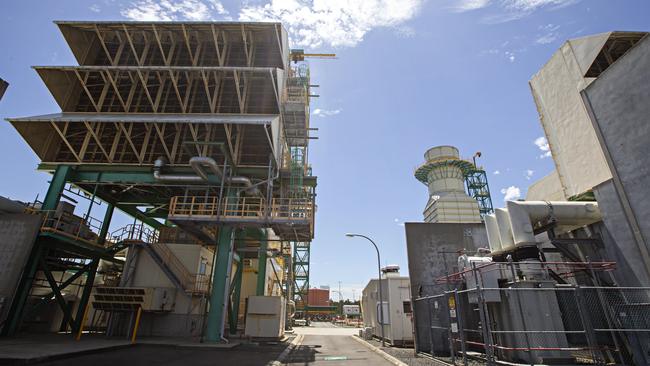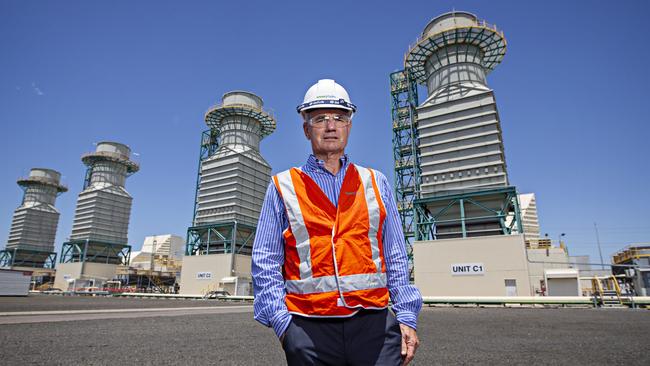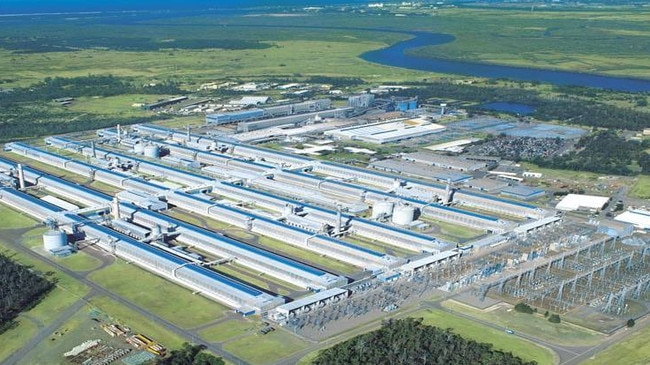Energy: AGL’s Liddell coal unit fails as Tomago and Alcoa’s Portland aluminium smelters forced to cut production
The company confirmed an outage at the Liddell station, with part of the plant out for a month. Two major industrial energy users have already curtailed production.

A major coal-fired unit at AGL’s Liddell power station has failed, compounding the crisis in the national electricity market.
The latest outage comes as two of the country’s biggest industrial energy users were forced to curtail production in an attempt to take pressure off the grid.
It is unclear exactly when the unit failed, but AGL confirmed on Friday that one of three units at Liddell had this week been taken out of service for at least a month. The company blamed a generator transformer malfunction.
The failure at the plant compounds the “perfect storm” afflicting the energy market, already suffering from issues at other coal generators amid skyrocketing gas prices and a cold snap that has led to lower-than-expected generation from renewable sources.
An AGL spokesman said the company was looking for ways to mitigate the impact of the failure.
“We’ve completed an investigation into the issue, and we’ve arranged for an on-site replacement transformer. The unit is expected to return to service in July,” he said in a statement. “We’re working through some measures that we may be able to take in the meantime to mitigate the impact.”
A series of coal outages spanning Victoria, NSW and Queensland have contributed to pressures with electricity stations including AGL’s Loy Yang A, NSW’s Vales Point and Queensland’s Callide all running below capacity.
Origin’s Eraring plant is struggling to receive reliable supplies of coal, and AGL is also completing planned maintenance and upgrades at its Bayswater power station that has taken a unit out of commission since March.
Combined with soaring gas prices, the outages have sent shudders through the electricity market, pushing up wholesale electricity costs and putting energy-dependent businesses under pressure to reduce consumption.
The Australian understands the Tomago aluminium smelter in NSW has partially curtailed its operations multiple times this week at the request of power provider AGL, cutting energy usage for a total of five hours this week in peak household demand times between 5pm and 7pm.
Alcoa confirmed on Friday its Portland aluminium smelter in Victoria had also partially curtailed output for an hour on Thursday night “in response to market conditions”.
Together the two plants are the biggest energy users on the east coast, and their temporary curtailments highlight the pressure faced within the national electricity market through the combined impacts of unplanned outages from coal-fired power plants and soaring gas prices.
Tomago consumes about 8,300 GWh of electricity per annum – about 12 per cent of energy used in NSW each year, and Portland makes up a similar portion of Victorian energy usage.
Both have long-term power contracts that allow power providers to require them to temporarily shed usage during peak power demand periods.
AGL provides power to Tomago and Portland buys electricity from a consortium including AGL, Alinta and Origin Energy.

While load shedding is not unusual for the two smelters at times of peak power usage in the NEM, it generally happens in the depths of winter or at peak summer temperatures.
Energy market sources say the requests this week, amid a “perfect storm” of coal-fired outages and lower output from renewables, has been exacerbated by difficulty faced by some gas peaking power plants – including Snowy Hydro’s 724 megawatt Colongra plant – to enter the market as power demand surged in the early evening.
Industry sources say gas shortages, and the early winter cold snap which has lifted power demand, have put pressure on peaking plants’ ability to manage the drawdown of gas from limited storage facilities, given the worst of the winter cold is still to come.
Colongra supplied only limited power to the grid from Sunday until Wednesday, using gas and diesel back ups in peak periods, before firing up to near full-capacity on Thursday evening.
Snowy Hydro chief executive Paul Broad said both Colongra and Snowy Hydro’s other assets have been generating power at historically high levels.

“Over these two months, Colongra has been running at unprecedented levels of generation with 34-gigawatt hours in April and 91-gigawatt hours in May. May also saw the highest-ever monthly generation level for our hydro assets of the mighty Snowy Scheme,” he said.
“Today Colongra has been running to supply the critical morning and evening demand peaks. Looking forward, the ability to continue to operate Colongra will be dependent on the ability of the gas supply system to provide fuel for operation.”
A rare cap on gas market prices of $40 a gigajoule – or five times higher than a year earlier – remained in place for Sydney, Melbourne and Brisbane after wholesale prices soared 80 times normal levels following a cold snap and the collapse of Weston Energy last week.
The spike in electricity prices has now extended into its fourth day, driven by a winter blast and disruptions due to unscheduled outages at coal fired power plants.
A third of coal units are unavailable in NSW, 27 per cent are out in Queensland and 23 per cent shut in Victoria, according to WattClarity.
Wholesale electricity prices on Friday jumped more than fourfold from normal levels and are trading above $400 per megawatt hour in NSW and Queensland.
Electricity futures are surging to new highs with persistently higher spot prices pushing baseload futures price to record highs above $250 per megawatt hour in NSW and Queensland, some $168/MWh in Victoria and $194/MWh in South Australia.
The inflationary trend has been building for much of this year. Wholesale power prices jumped by 141 per cent in the March quarter from the same period a year earlier.
Electricity and gas markets have surged in April and May and the start of June with NSW prices on track to finish the June quarter twice as high as the previous record, according to experts.
Household power bills are also set to rise by up to hundreds of dollars for some customers after the national regulator announced increases of up to 18 per cent on standing offers from July 1.
More Coverage




